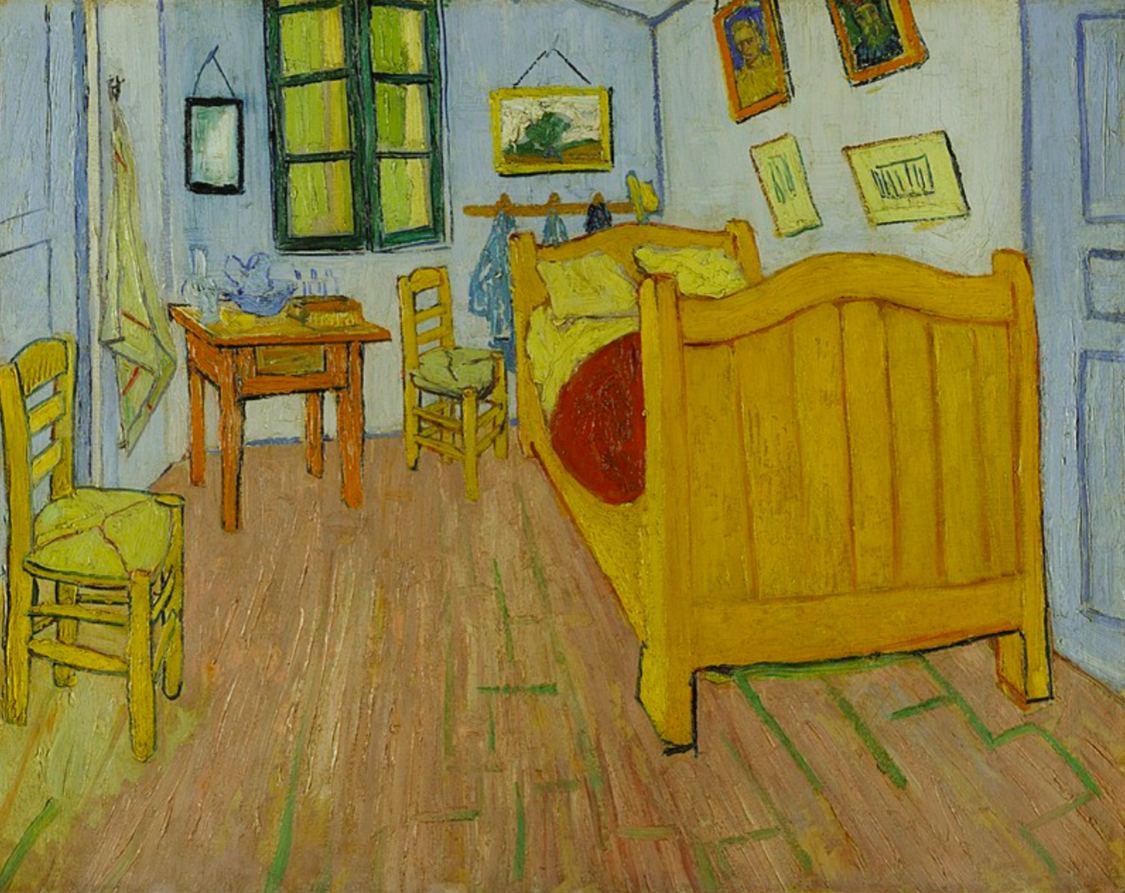Van Gogh – The Bedroom
When thinking about the most well known paintings of Van Gogh it is his surreal portraiture and dream-like landscapes and scenes of nature that often come to mind. But one of his most admired and re-visited works was a small painting, simply titled The Bedroom.
The work was completed when the artist was suffering from an illness and was ordered by his doctor to remain isolated in the confines of his bedroom in Arles in a house known as the Yellow House. Whilst he was in confinement, Van Gogh started conceiving ideas for the composition and described it in detail in a letter to his brother, Theo. Planning and sketching out ideas was a crucial stage in Van Gogh’s artistic process before putting paint to brush, as the letter includes numerous preliminary sketches. The letter also highlights Van Gogh’s desire to use vivid, contrasting colours in the painting and defines colour as an important imaginative tool in his work.
Even though it is a painting of a small room, Van Gogh has successfully made use of a broad range of colours, from the blue vase on the table by the window to the bright green detailing of the wooden floor. His exploration of colour makes the confined space appear larger and more detailed than it is in reality. This combined with the intricate detailing, act as an expression of the artist’s emotions towards solitary confinement and the frustrations this must have caused.
The location’s name, Yellow House, further inspired Van Gogh to highlight certain features of the room in a bold yellow, including the bed, chairs and hat behind the bed. Pleased with the final piece, Van Gogh later revisited the subject, creating two further compositions of The Bedroom, each experimenting with different details and use of colour. Even though he was forced to remain inside, Van Gogh was still able to create a profound and beautiful piece of art that quickly became his personal favourite.

